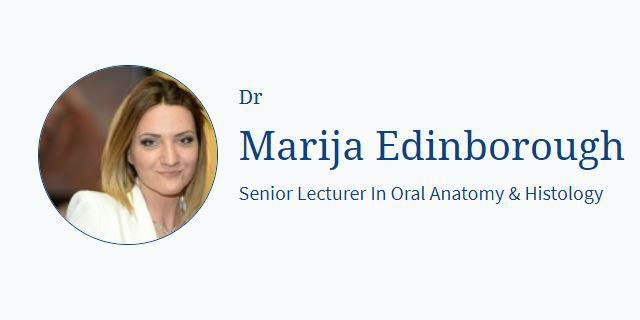European Association of Archaeologists (EAA) 2020 - Call for Papers/Posters
Deadline : 13 February 2020. We hope you will be able to join us in Budapest.
Short Biography – Marija Edinborough
Dr Edinborough joined the Melbourne Dental School as a Senior Lecturer in Oral Anatomy and Histology in July 2018. Before that she was a Marie Curie European Research Fellow at the University College London, Institute of Archaeology. She has 12 years of active research in the field of Bioarcheology and Dental Anthropology. She has led five research projects, investigating tooth cementum annulation, genetic identification of Treponema pallidum, and life histories of the Neolithic Demographic Transition. Her projects were funded by German Academic Exchange Service, Bavarian Ministry of Science and Arts, the European Commission - Marie Skłodowska-Curie Action for Excellence in Science, and most recently from the F. A. Kernot Foundation of the Melbourne Dental School.
Dr Edinborough’s research interest is related to narrowing the methodological gaps between physical/dental anthropology, medicine, biology and archaeology. Her current programme of research focuses on a range of topics that can be summarised into two key areas: 1) methodological advances in dental histology, with focus on microscopic study of mineralized dental tissues from archaeological collections and clinical patients; 2) life history from tooth cementum microstructure, including analysis dental remains taken from radiocarbon dated archaeological assemblages allowing reconstruction of ageing profiles and other life history variables with a direct microscopic analytical method.
Call for Papers
Call for papers now open for the session “Analytical Advances in the Study of Human Teeth: Diet, Mobility, Seasonality, and Health Status” we are organizing at the meeting of the European Association of Archaeologists that will be held in Budapest between August 26-30, 2020. The session focuses on analytical advances in the study of human teeth and aims at bringing together scholars from different fields of research. Below you can find the session abstract with more details. The deadline for the paper abstract submission (both oral and poster presentations) through the conference portal (https://submissions.e-a-a.org/eaa2020) is February 13th, 2020.
Please let us know if you have any questions and we hope you will be able to join us in Budapest!
With our best wishes,
Dusan Boric, Alessia Nava, Emanuela Cristiani, and Marija Edinborough
Session Details
Theme:
5. Theories and methods in archaeology: interactions between disciplines
Session: #484
Session Title: Analytical Advances in the Study of Human Teeth: Diet, Mobility, Seasonality, and Health Status
Abstract: Human teeth are frequent finds in archaeological and paleoanthropological contexts as they are often able to endure even the most challenging and destructive taphonomic processes. Thanks to their physical-chemical properties, which make them the most durable part of the human body, dental mineralized tissues are capable of preserving information about an individual’s life history—from the prenatal life to death. Over the last decade, multi-disciplinary and multi-analytical approaches in the investigation of human teeth resulted in a growing body of data, which document ancient population mobility, weaning patterns, early and post-weaning diet, adult diet, oral health status, occupational activities, growth rates, subadult age-at-death, sex determination, and season-at-death.
Presently, the use of cutting-edge methodologies in dental anthropology are advancing at an increasing pace. Multi-disciplinary approaches have proven effective in merging diverse analytical methodologies to address specific, and otherwise elusive, research questions; for instance, dietary habits, occupational activities, and health conditions based on an integrated analysis of dental calculus; dietary histories and mobility through chemical analyses (i.e. bulk isotopes or histologically defined laser ablation mass spectrometry); micro and macro evolutionary changes through inner and outer morphological analysis based on high resolution microtomography; infants’ growth patterns, health, and age-at-death using dental tissues histology; diet, occupation, and changes in the biomechanics of chewing through macro- and micro-wear analysis.
We invite contributors who work in the aforementioned fields of study to present relevant data applied to archaeological and paleoanthropological case studies, with an emphasis on multi-disciplinary approaches and cutting-edge methodologies.
Keywords: teeth, dental anthropology, dental mineralized tissue, mobility, seasonality, diet
